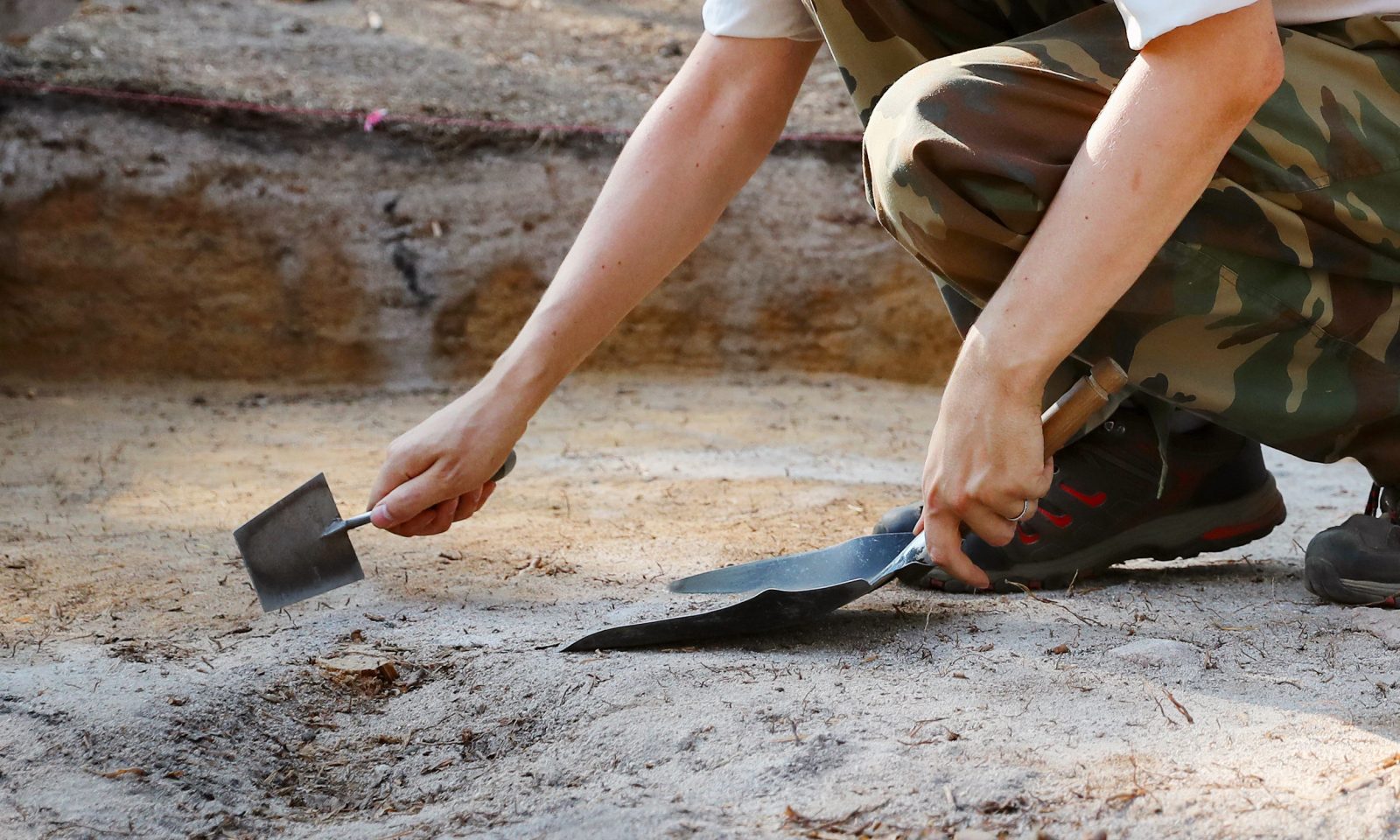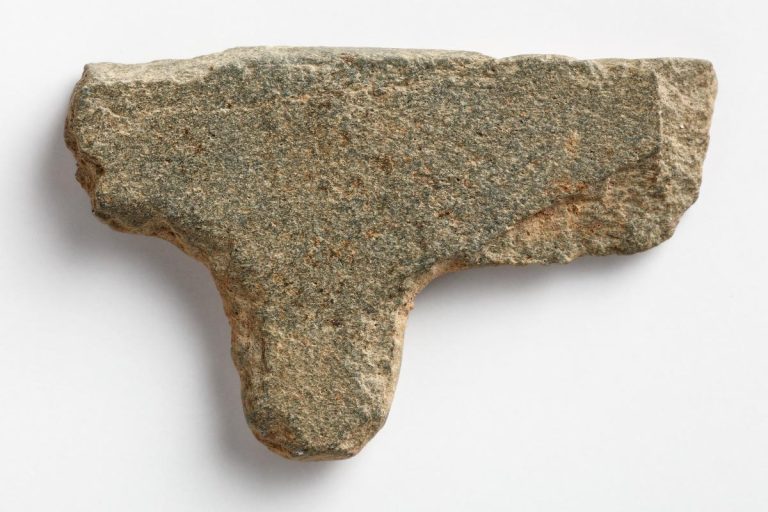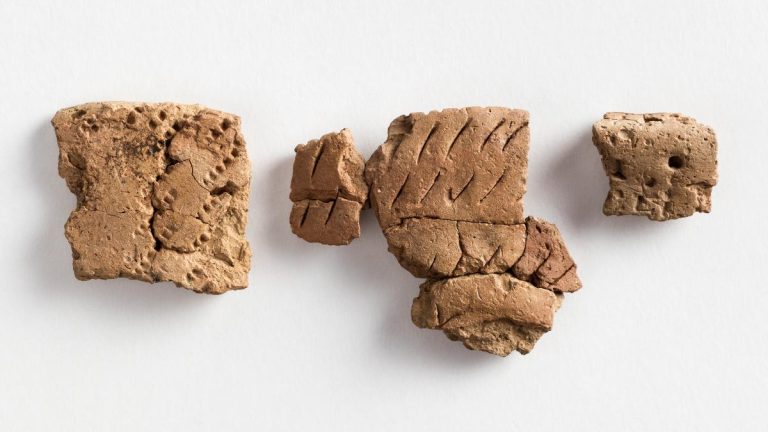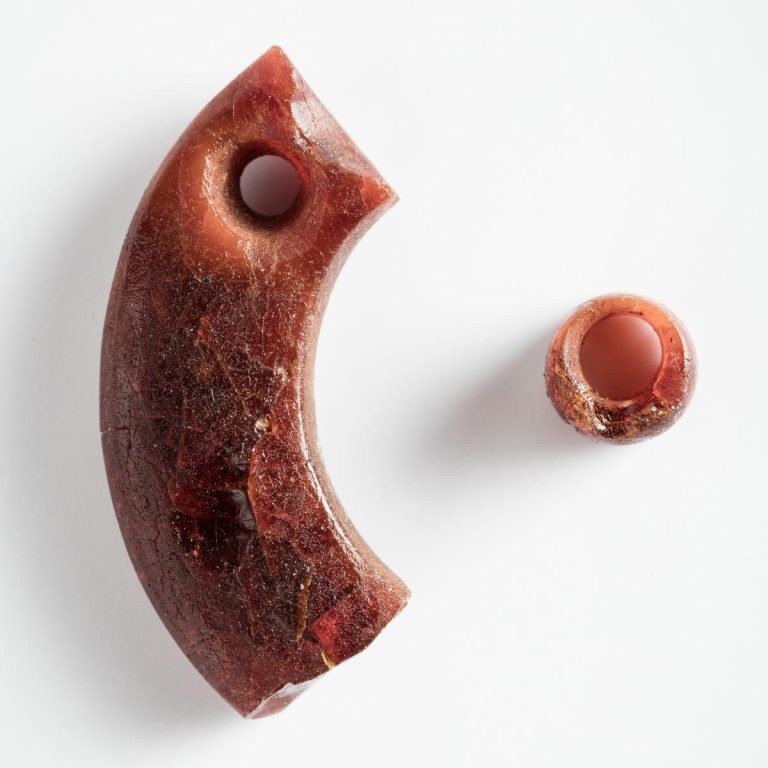Finland’s acidic soil preserves organic matter poorly. Wood, bark, leather and bones are therefore rare. Non-decomposing matter on the other hand, is well preserved. The most common materials found in excavations are stone, pottery and burnt bone. Burnt bone is better preserved than fresh bone because only the inert mineral material in the bone remains after burning.
Wood can also be preserved under special conditions. Under anaerobic conditions, for example when buried in watery clay, wood can survive surprisingly well. This was the case near Kierikki in the Purkajasuo Marsh, where a large number of Stone Age fishing tools were buried under layers of flood sand from the Iijoki River between 3500 and 2700 BCE.
In addition to artifacts, excavations look for signs of human impact on the land. The soil may be compacted, unusually loose, discolored in places, or contain an unusual amount of a particular material. These different layers may be on top of each other, overlapping or intersecting. Some may also be natural. All signs and findings are carefully documented so that they can be viewed as a whole after the excavation and conclusions can be drawn about the cause of the phenomena.



